#artist is jacopo tintoretto
Text
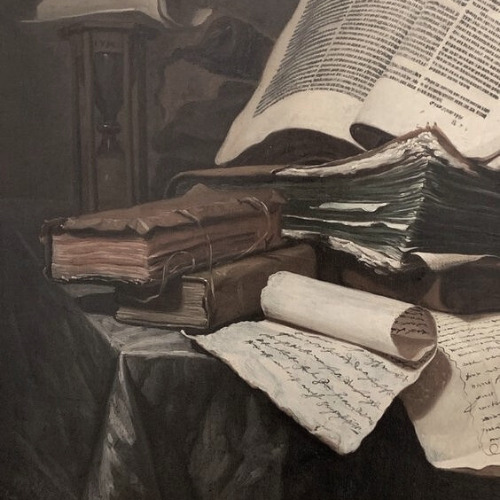








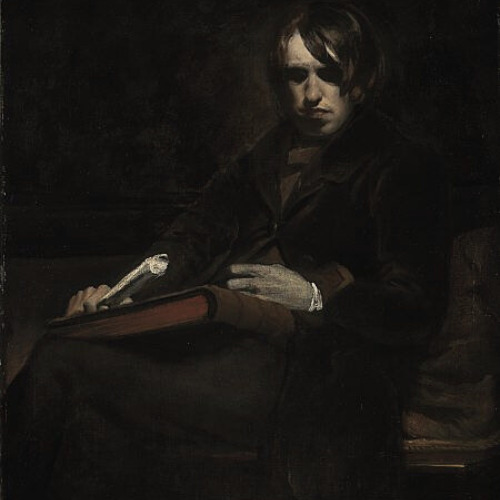





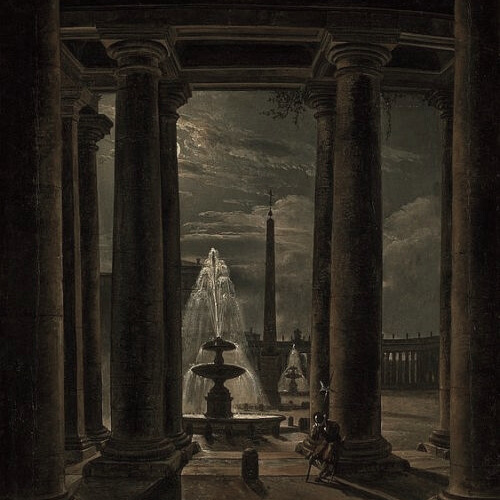

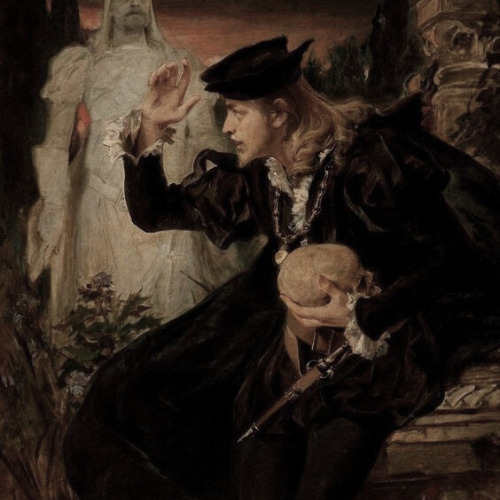
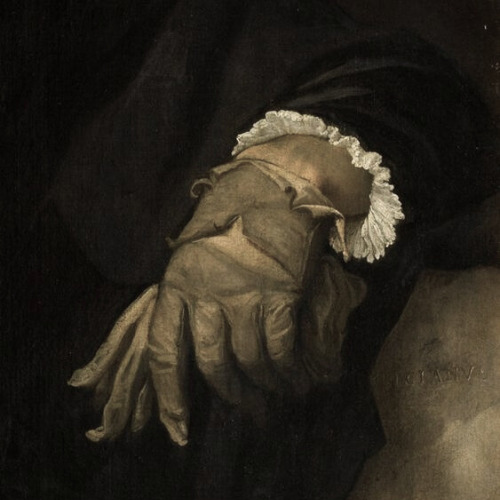

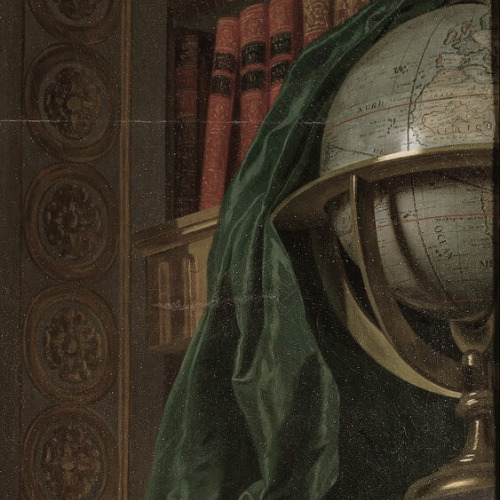



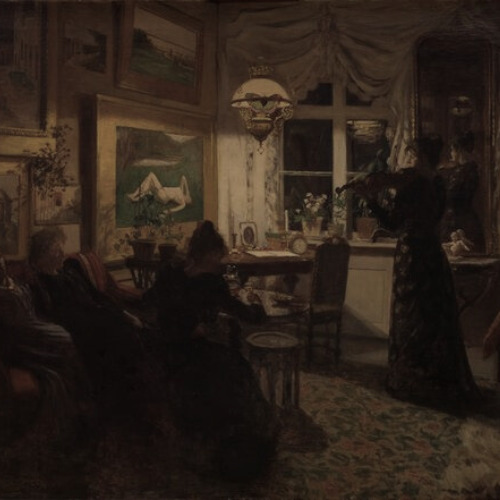



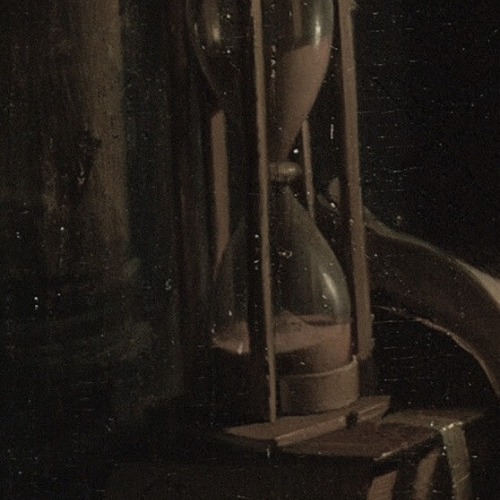

art aesthetics: dark acadmia
#cant find artist#artist is gerrit dou#artist is paul fischer#artist is james carroll beckwith#artist is sir anthony van dyck#artist is nicolas regnier#artist is hubert and jan van eyck#artist is eugene delacroix#artist is jan willem pieneman#artist is sir william fettes douglas#artist is wilhelm bendz#artist is carl holsoe#artist is jacopo tintoretto#artist is thomas wyck#artist is lindsay bernard hall#artist is franz ludwig catel#artist is pieter claesz#artist is pedro americo#artist is titian#artist is giorgio vasari#artist is alexander roslin#artist is jusepe de ribera#artist is anne francoise couloumy#-artist is carl holsoe#artist is anna petersen#artist is peter hasenclever#artist is irving ramsey wiles#artist is georges de la tour#artist is unknown-#art aesthetics
388 notes
·
View notes
Photo

Die Agonie im Garten von Jacopo Robusti Tintoretto (oil on canvas)
#kunst#kunstwerk#art#artwork#jacopo robusti tintoretto#künstler#artist#religion#religiöse kunst#religious art#garten#garden#garten gethsemane#garden gethsemane#jesus christ#christus#christ#jesus#savior of the world#retter der welt#apostel#apostle#engel#angel#people#menschen#schlafen#sleeping#bibel#bible
10 notes
·
View notes
Video
Jacopo Robusti, called Tintoretto, Madonna and Child, ca. 1570-1572, Oil on canvas, 11/23/22 #legionofhonor #artmuseum by Sharon Mollerus
#called Tintoretto#Oil on canvas#Legion of Honor Museum#ca. 1570-1572#Madonna and Child#San Francisco#artist#Jacopo Robusti#CA#flickr
11 notes
·
View notes
Text

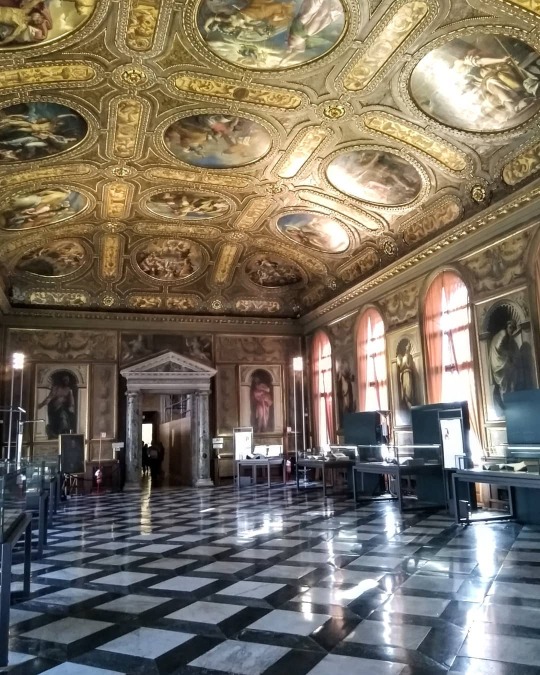

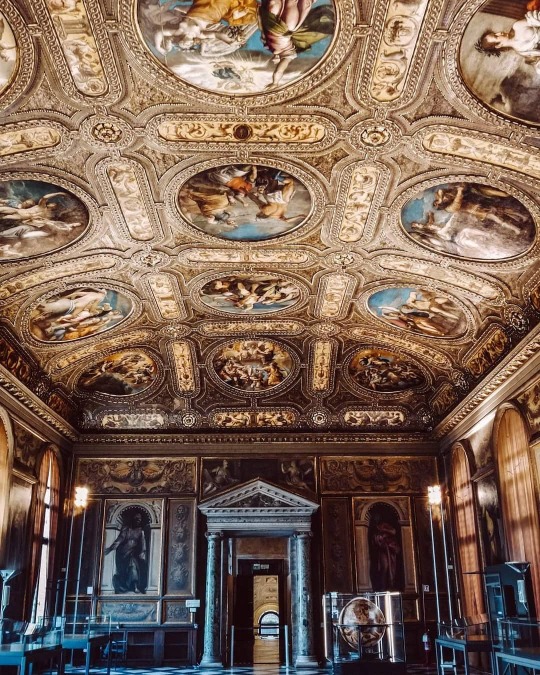
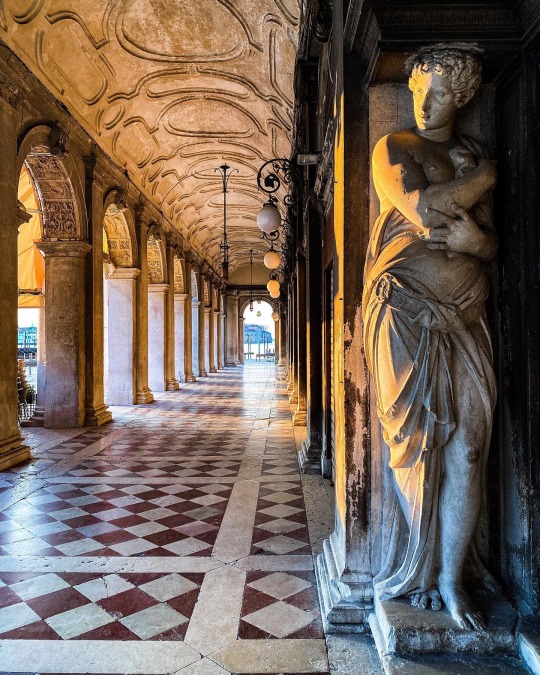
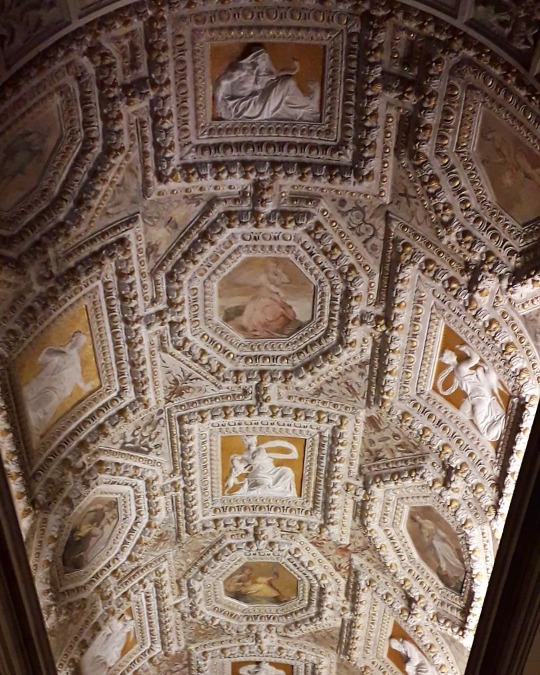
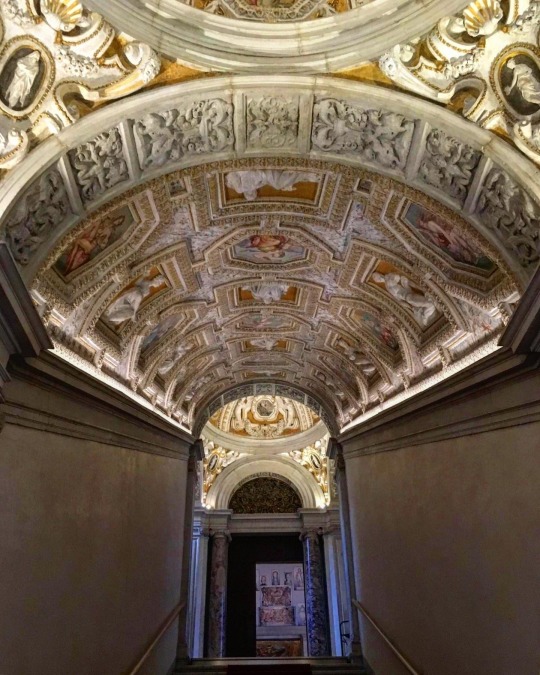
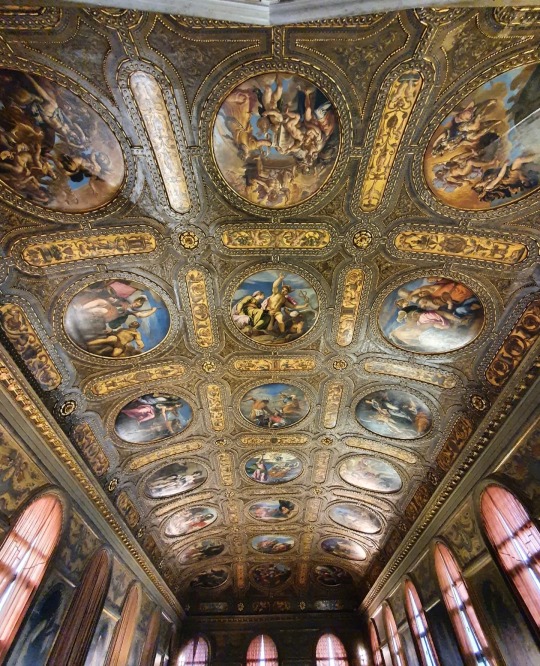

The Biblioteca Nazionale Marciana is located in Piazza San Marco, Venice. Its construction was due to the need to house the private collection of manuscripts, codices and incunabula, donated to the city of Venice by Cardinal Basilio Bessarión in 1468. Its construction began around 1537 under the design of Jacopo Sansovino and was completed by Vincenzo Scamozzi in 1588.
Currently its funds house more than 1million. of printed books, approx. 13,000 manuscripts, 2,883 incunabula and some 24,000 books published between 1500 and 1600. It also houses the unique scores of the operas by Francesco Cavalli (1602-1676), the most important composer of the s. XVII, Italian organist and singer.
Important artists such as Titian, Veronese, Alessandro Vittoria, Tintoretto, etc. also participated in the decoration of the library.
326 notes
·
View notes
Text

The interior of the Sansovino Hall, the Marciana Library, Venice
by Carl Friedrich Heinrich Werner
Designed by Jacopo Sansovino between 1537 and 1553, the Marciana National Library, was built by order of the procurators of San Marco, as the Venetian Republic's state library. The building is today one of Italy's most important national libraries, occupying several spaces on the Piazzetta, directly across from the Doge's palace.
The ceiling of the elaborately decorated large hall, planned by Sansovino, is comprised of twenty- one tondos, the work of seven painters chosen by Titian and Sansovino. These paintings are of allegorical subject matter: the three most well-known amongst them are by Paolo Veronese. The walls are lined with paintings of philosophers by several distinguished sixteenth century artists including Veronese and Tintoretto.
#interior#sansovino hall#marciana library#venice#architecture#art#painting#history#europe#european#italy#northern italy#globe#carl friedrich heinrich werner#venetian#carl werner
48 notes
·
View notes
Text
A black-and-white chalk drawing of the head of a portly man was recently sold at a Christie’s auction as the only work firmly attributed to Marietta Robusti, daughter of the Venetian master Jacopo Robusti, perhaps better known as Tintoretto. Reports from her contemporary biographers suggest that Marietta, who worked in her father’s workshop in the late 16th century, was an accomplished and sought-after artist in her own right. But in the centuries that followed she fell into obscurity. Now, amid a growing movement to reclaim the women artists so often neglected by history, Marietta has the potential to join 16th-century peers such as Lavinia Fontana and Sofonisba Anguissola in the history books – if only researchers could find some more of her work.
‘Marietta had a brilliant mind like her father. She painted such works that men were astonished by her talent,’ writes Carlo Ridolfi, author of a biography of Jacopo Tintoretto and two of his children, Domenico and Marietta, first published in 1642. Nicknamed ‘La Tintoretta’, Marietta – who, according to Ridolfi, dressed as a boy in order to assist her father on his projects – is recorded as having painted many portraits and produced works of her own invenzione. Another of Tintoretto’s early biographers, Raffaello Borghini, reports how Marietta was requested as a court artist by the Holy Roman Emperor Maximilian II, Archduke Ferdinand of Austria, and King Philip II of Spain – although ‘Greatly loving his daughter, [Tintoretto] did not want her taken from his sight,’ writes Borghini.
With such glowing accounts of Marietta’s artistic prowess, attempts to rediscover her work have been numerous and in some cases quite inventive. Unfortunately, these endeavours have rarely been successful.
One of the most commonly attributed paintings is a Self-Portrait with Madrigal located in the Uffizi’s Corridoio Vasariano in Florence. The painting shows a young woman in a white dress with her right arm resting on a harpsichord behind her and a music score in the other hand. The Uffizi labels the work as by Marietta Robusti in its online catalogue. However, art historians have questioned the credibility of this attribution based on provenance records, which show that the portrait was attributed to Titian by a Venetian collector in the 17th century.
Most damning of all, though, is the mediocrity of the painting. The art historian Joanna Woods-Marsden comments in her book Renaissance Self-Portraiture (1998) that the rudimentary foreshortening and poor anatomy are hard to reconcile with the praise lauded on Marietta by her biographers. Duncan Bull, writing in the Burlington Magazine in 2009, dismisses it as ‘a feeble work that speaks more of Verona than of Venice, let alone of Tintoretto’s workshop’. The lack of naturalism and the stiffness of the sitter are worlds away from the fluid, energetic style characteristic of a pupil of the Venetian master.
‘Marietta’s special gift,’ according to Ridolfi, ‘was knowing how to paint portraits well.’ This was not unusual praise for 16th-century women artists, who were highly valued as portraitists. Women were considered to have an eye for detail, particularly jewellery and decoration on clothing, which was so crucial in portraiture for demonstrating a sitter’s wealth and status.
Several portraits have been tentatively attributed to Marietta Robusti. These include a Portrait of an Old Man and a Boy in the Kunsthistorisches Museum in Vienna and the Rijksmuseum’s Portrait of Ottavio Strada. The attribution of the former painting rested on the signature ‘M R’ on the bottom left of the canvas; after cleaning, it appears that the signature actually reads ‘M 3’. The painting in Amsterdam, currently catalogued as by Jacopo Tintoretto, has received attention because Marietta’s early biographers mention a portrait she painted of the courtier Jacopo Strada. Some art historians argue that the biographers mistakenly cited Jacopo instead of his son Ottavio Strada – and that the Rijksmuseum’s painting is the portrait in question. But this is just one theory.
Plenty of historic catalogue entries attribute other work to Marietta, but evidence of these paintings is now thin on the ground. It is likely that Marietta also helped her father with public commissions, such as paintings in their local church in Venice, the Madonna dell’Orto. But her contributions in this respect are hard to pinpoint.
Just one drawing, therefore, is categorically attributed to Marietta. Head of man, after the antique, which sold at Christie’s in Paris last month for €100,000, depicts the Roman emperor Vitellius drawn from an ancient bust – a copy of which Tintoretto kept in his workshop. Scrawled across the drawing are the words ‘this head is by the hand of madonna Marietta’, probably added by her father to distinguish the drawing from the countless others that would have lain about the workshop.
This drawing is a much-needed example of Marietta’s talents. As Stijn Alsteens, international head of Christie’s Old Master drawings department explains to me via email, ‘Marietta in her time was admired as a portraitist, and the drawing can be said to reflect her interest in physiognomy.’ The drawing, Alsteens says, confirms Ridolfi’s account that Marietta was a gifted member of her father’s studio, on an equal footing with her male counterparts.
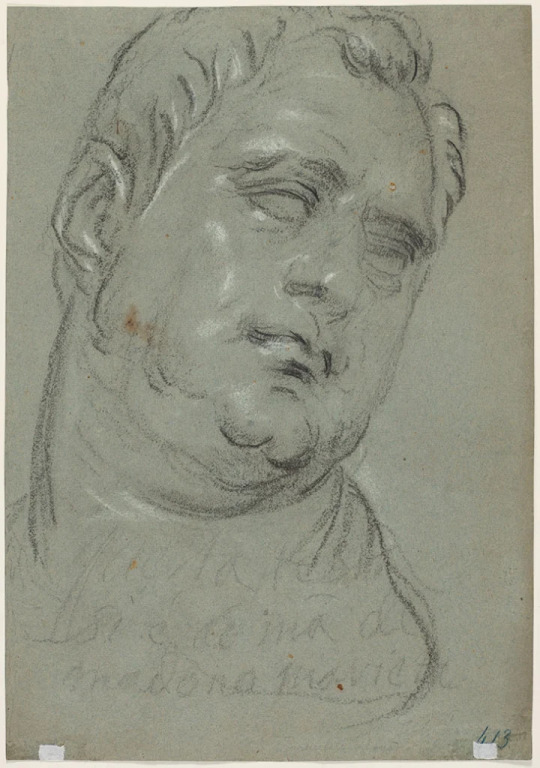
In the drawing, Marietta captures the head in soft, swift strokes, economic shading and dashes of highlights. We see the fluidity and movement expected of an artist trained by Tintoretto. On the recto of the sheet is another drawing from Tintoretto’s workshop of unknown attribution portraying the face of Giuliano de’ Medici. ‘Where the recto is mostly a study of light and shadow, the verso focuses on the distinctive features of Vitellius’s face – true to Marietta’s gifts as a portraitist,’ Hélène Rihal, head of Christie’s Old Master drawings department in Paris, said in advance of the sale.
Although the attribution is accepted, it is only one drawing and that poses a dilemma for anyone seeking to restore Marietta’s reputation. The historical evidence has the potential to put Marietta on a par with contemporaries like Fontana or Anguissola. The gaping hole is the physical evidence. For the moment La Tintoretta, the legendary woman artist, remains just that – a legend.
#studyblr#history#art#art history#portrait painting#feminism#italy#veneto#venice#cannaregio#madonna dell'orto#marietta robusti#jacopo robusti#tintoretto#carlo ridolfi#raffaello borghini#maximilian ii holy roman emperor#ferdinand ii archduke of austria#philip ii of spain#ottavio strada#jacopo strada#vitellius
0 notes
Text
Superstar
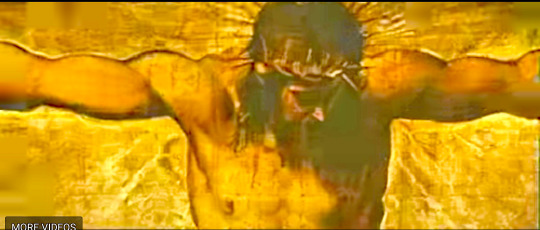
youtube
The brutality of the crucifixion having been foreshadowed during the 1973 movie's "Gethsemane", where the moment Jesus accepts his fate, there's a montage of zooms on images of his crucifixion as depicted in paintings across the years since.

Tintoretto — 1565
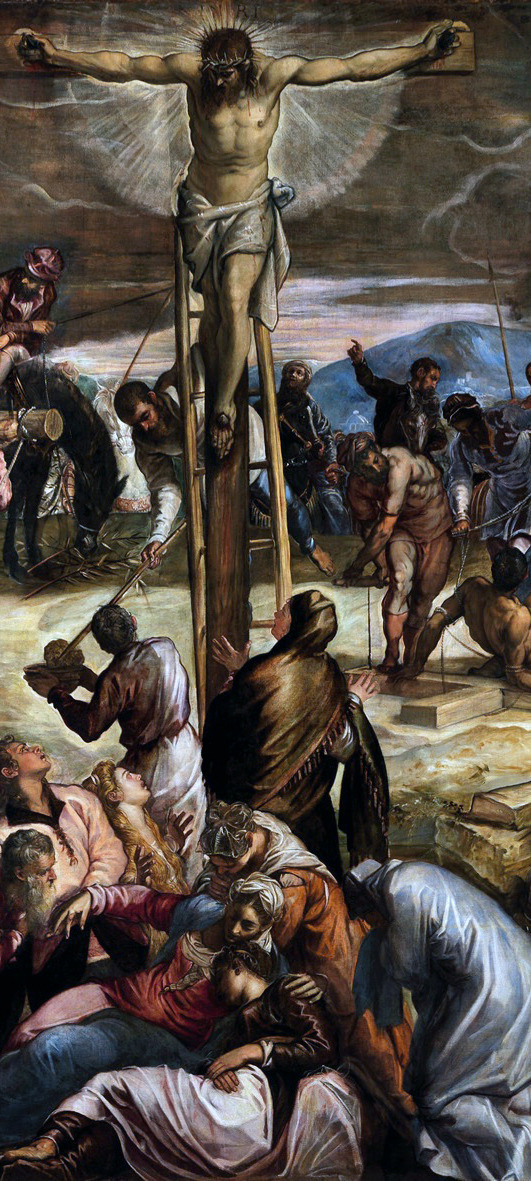
Tintoretto, "little dyer", or "dyer's boy."

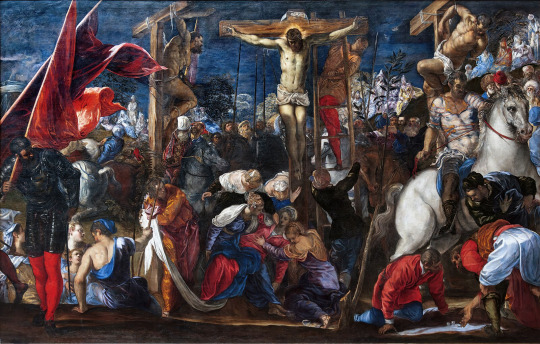



youtube
youtube
Tintoretto (Italian, 1519–1594)
Tintoretto was an Italian painter of the Mannerist style known for his use of deep perspective in dramatic scenes.
Works such as The Last Supper (1594), conveyed his otherworldly vision of events, through contrast and plunging pictorial space.
“Indeed, he has surpassed even the limits of extravagance with the new and fanciful inventions and the strange vagaries of his intellect, working at haphazard and without design, as if to prove that art is but a jest,” Giorgio Vasari once wrote of him. “This master at times has left as finished works sketches still so rough that the brushstrokes may be seen, done more by chance and vehemence than with judgment and design.”
Born Jacopo Robusti. 1518 in Venice, Italy, he took the last name of tintoretto (little dyer) after his father’s profession as a silk dyer.
Little is known of his training, but it is likely he studied the works of both Michelangelo and Titian as a youth.
Reacting against the harmonized, pastoral scenes popularized by Giorgione in the 1540s, he produced turbulent paintings based on drawings of staged wax figurines arranged in stark lighting.
Tintoretto was highly sought after during his life, and with the death of Titian, he and Paolo Veronese were the giants of Venetian painting.
The artist died on May 31, 1594 in Venice, Italy.
Today, his works are held in the collections of the Louvre Museum in Paris, the National Gallery in London, the Uffizi Gallery in Florence, and the Palazzo Ducale in Venice, among others.
0 notes
Text
Tintoretto is an artist who did not create for money


Tintoretto St Mary Magdalen.
Tintoretto - the great Italian artist of the XVI century, author of numerous paintings of the historical genre, one of the greatest representatives of the Venetian school of painting. His real name is Jacopo Robusti, and the outstanding genius of art received the nickname Tintoretto (from Italian - "little dyer") as a child by the profession of his father - a dyer of fabrics.
Read the full article
0 notes
Text
St Marks Basilica Paintings
Nestled amidst the enchanting canals and historic architecture of Venice, Italy, St. Mark's Basilica stands as a beacon of cultural and spiritual significance. Beyond its awe-inspiring architecture, the basilica houses a treasure trove of artistic masterpieces that narrate the city's history, faith, and creativity. Within these hallowed walls, ten paintings emerge as captivating windows into the past, revealing the soul of Venice through strokes of genius.
Pala d'Oro Altarpiece: Glistening Testament of Faith
The Pala d'Oro Altarpiece, a jewel-encrusted masterpiece, commands attention at the heart of St. Mark's Basilica. A symphony of gold, gems, and enamelwork, it resonates with Byzantine opulence. Crafted as a testament to faith and power, it tells the story of Venice's glorious past while reflecting the city's role as a crossroads of cultures.
2. Madonna Nicopeia: A Byzantine Connection
Within the basilica's sacred embrace, the Madonna Nicopeia gazes serenely. This Byzantine icon, believed to safeguard the city, is a bridge between Venice and Constantinople, underscoring the historical ties that enriched the city's spiritual tapestry.
3. St. Mark Enthroned with Angels: Renaissance Reverence
Jacopo Tintoretto's "St. Mark Enthroned with Angels" captures the essence of Venice's Renaissance spirit. The dynamic composition, intricate detailing, and emotional depth mirror the city's multifaceted identity. As St. Mark gazes from his celestial perch, the painting serves as a symbol of the city's devotion and artistic innovation.
4. The Deposition: A Glimpse into Suffering
Titian's "The Deposition" resonates with the High Renaissance's blend of technical mastery and emotional depth. The scene's solemnity conveys the transformative power of faith, reminding observers of the beauty that emerges from suffering and sacrifice.
5. The Last Judgment: Echoes of Divine Reckoning
Giovanni Bellini's "The Last Judgment" adorns the basilica's entrance, depicting the climactic moment of divine judgment. This monumental painting channels a sense of awe and reverence, reminding all who enter of life's impermanence and the promise of spiritual redemption.
6. The Translation of the Body of St. Mark: Theatrical History
Tintoretto's dynamic brushwork and dramatic composition come to life in "The Translation of the Body of St. Mark." The canvas unveils a pivotal moment in Venice's history as the saint's remains are brought to their final resting place. The painting's vibrancy captures the city's relentless spirit and devotion.
7. The Baptism of Christ: Serenity in Spirit
Gentile Bellini's "The Baptism of Christ" bathes the observer in a serene portrayal of Christ's baptism. Against the backdrop of the Venetian landscape, the scene exudes tranquility, serving as a visual meditation on the spiritual connection between humanity and divinity.
8. The Healing of the Lame Man: A Glimpse of Grace
Tintoretto's mastery shines in "The Healing of the Lame Man," illustrating a biblical miracle with skillful use of light and shadow. The scene's dynamics evoke the miracle's transformative power, inviting contemplation on the intertwining of faith and healing.
9. The Miracle of the Slave: Divine Intervention Unveiled
Tintoretto's "The Miracle of the Slave" is a testament to his narrative prowess. The painting portrays St. Mark intervening to save a slave from torture, capturing the urgency of the moment. In this scene, faith and compassion intertwine, embodying the spirit of Venice's devotion.
10. St. George and the Dragon: Courage and Legacy
Vittore Carpaccio's "St. George and the Dragon" vividly narrates the timeless legend. As the valiant saint faces the fearsome dragon, the painting symbolizes Venice's indomitable spirit and its commitment to overcoming adversity.
0 notes
Text
Virtual Sketchbook Section 3

Holy Family with Saints Anne and John the Baptist
by Domenico Tintoretto
An oil on canvas painting, The Holy Family with Saints Anne and John the Baptist by Domenico Tintoretto was completed circa 1590s. Its unframed rectangular dimensions are 60 1/8 inches high by 52 1/4 inches in width. The painting encompasses a variety of dark and bright velvety schemes of saturated colors, primarily blues and indigos in the darker areas with the bright yellows and subtle yellows for skin tones used in the lighter areas. This provides a level of contrast against the unity provided with perfect circle shapes used in different proportions that assist in the asymmetrical balance of the piece. The darker shadows and shading around the figure in the upper right, presumably that of Joseph, are countered and balanced by the brighter touches above Saint Anne. This draws one into the brighter center of the painting, converging on the main subjects of Mary, the Christ child and a young John the Baptist in the foreground. Scale and proportion is a central theme with Mary and the Christ child appearing somewhat larger than the other figures as a means by Tintoretto to show their importance.
This painting rekindles the things I grew up with that were centered on religion. The Christ child displayed here was a key and central theme in my early life and still is today. When I first saw this painting, I felt it captured the joy and happiness I felt in my youth in relation to the importance of Christ. The colors and focus used by Tintoretto highlight Saint Anne and John the Baptist, who were key players in the Christ’s life, but do not overshadow the central theme which is Mary and the Christ child.
The work was produced during the late Renaissance and was heavily influenced by the Tintoretto families respect for their religious beliefs. Much of Domenico’s style was developed under the guidance of his father, Jacopo Tintoretto. Due to its refined manner and highly polished style, it is believed to have been commissioned by venetian nobility, though no specific name could be determined. The piece captures a clear message of the importance of the Christ child and Tintoretto did a superb job in his depiction of the theme.
This painting was significant at that time in that it reinforced the religious theme prevalent during the Renaissance. Though this theme was previously depicted in works by other artists, this work captured the religious subject in a polished style, fit for nobility, unlike in previous works that used broad brushstrokes and impasto. The true testament to this fact is that it survived over 700 years and is to this day revered as a classic depiction of the Holy Family.

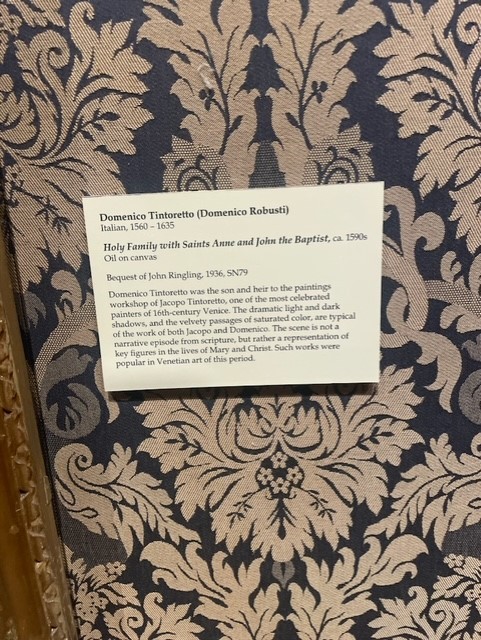
0 notes
Text
Jacopo Tintoretto il Furioso
Those last weeks we have been focusing on Jacopo Tintoretto’s painting techniques.
Tintoretto left an indelible mark on 16th-century Venetian painting and beyond. His unique approach to artmaking with rapid, loose brushstrokes and strong contrasts between light and dark deeply challenged the traditional style of the iconic master Titian, Paolo Veronese, and his Venetian contemporaries.
Tintoretto, born Jacopo Robusti (late September or early October 1518 – 31 May 1594) was an Italian painter identified with the Venetian school. His contemporaries both admired and criticized the speed with which he painted, and the unprecedented boldness of his brushwork. For his phenomenal energy in painting he was termed Il Furioso ("The Furious"). His work is characterised by his muscular figures, dramatic gestures and bold use of perspective, in the Mannerist style.

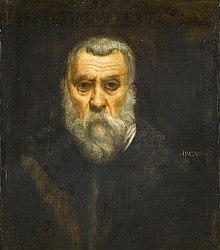
Mannerism, which may also be known as Late Renaissance, is a style in European art that emerged in the later years of the Italian High Renaissance around 1520, spreading by about 1530 and lasting until about the end of the 16th century in Italy, when the Baroque style largely replaced it. Northern Mannerism continued into the early 17th century.
In art history, the High Renaissance was a short period of the most exceptional artistic production in the Italian states, particularly Rome, capital of the Papal States, and in Florence, during the Italian Renaissance. Most art historians state that the High Renaissance started around 1495 or 1500 and ended in 1520 with the death of Raphael, although some say the High Renaissance ended about 1525, or in 1527 with the Sack of Rome by the army of Charles V, Holy Roman Emperor, or about 1530 (see next section for specific art historians’ positions). The best-known exponents of painting, sculpture and architecture of the High Renaissance include Leonardo da Vinci, Michelangelo, Raphael, and Bramante. In recent years, the use of the term has been frequently criticized by some academic art historians for oversimplifying artistic developments, ignoring historical context, and focusing only on a few iconic works.
Fast Painting
The conception of a sudden, fast, conceptual way of laying color, which allows to paint adopting new and innovative techniques with an Impressionistic vibe to it without any particular detail or precision but enriched by the casuality of an instinctive emotional investment, almost free of whatever control, which can grant surprising outcomes.
Impressionism was a 19th-century art movement characterized by relatively small, thin, yet visible brush strokes, open composition, emphasis on accurate depiction of light in its changing qualities (often accentuating the effects of the passage of time), ordinary subject matter, unusual visual angles, and inclusion of movement as a crucial element of human perception and experience. Impressionism originated with a group of Paris-based artists whose independent exhibitions brought them to prominence during the 1870s and 1880s.
0 notes
Photo

MWW Artwork of the Day (3/28/18)
Tintoretto [Jacopo Robusti](Venetian, 1518-94}
The Last Supper (c. 1592-94)
Oil on canvas, 365 x 568 cm.
San Giorgio Maggiore, Venice
Tintoretto painted the Last Supper several times in his life. This version can be described as the fest of the poors, in which the figure of Christ mingles with the crowds of apostles. However, a supernatural scene with winged figures comes into sight by the light around his head. This endows the painting with a visional character clearly differentiating it from paintings of the same subject made by earlier painters like Leonardo.
The curious diagonal position of the table for the "Last Supper" is explained by the installation of the painting on the right wall of the presbytery of San Giorgio Maggiore. The table was to be perceived by visitors to the church as an extension in perspective of the high altar, or conversely the high altar was to be seen as a prolongation of the table for the Last Supper. The priestly bearing of Christ and the liturgical utensils on the small side table play on the same connection. The winged apparitions characterize the Eucharist as the "bread of angels" (St. Thomas Aquinas) and in their non-material, other-worldly nature indicate the mystery of transubstantiation (the transformation of bread and wine into the body and blood of Christ).
For more Tintoretto see this MWW exhibit/gallery:
* Cinquecento III: The Venetian Mannerists
2 notes
·
View notes
Photo


Doge Alvise Mocenigo (1507–1577) Presented to the Redeemer probably 1577
Jacopo Tintoretto (Jacopo Robusti) Italian
On view at The Met Fifth Avenue in Gallery 623
This unfinished sketch records one stage of Tintoretto’s preparation of a large votive painting of Doge Alvise Mocenigo destined for a room (the Sala del Collegio) in the Doge’s Palace in Venice. Mocenigo ruled at the time of Venice’s great victory at sea over the Turks, the Battle at Lepanto of 1571, represented in the sketch by the ships in the background, and during the ferocious plague of 1576 (which killed the painter Titian), after which he pledged to build the great church of the Redentore designed by Palladio. In the sketch the artist mapped out the principal figures, including rudimentary ideas for the figure of Saint Mark to the left of the kneeling Doge, and painted the silhouette of the saint’s lion on a dark ground in the lower left. The beautiful figure of Christ at the left was completely rethought in the final composition. For more information about this important commission, visit metmuseum.org.
21 notes
·
View notes
Photo

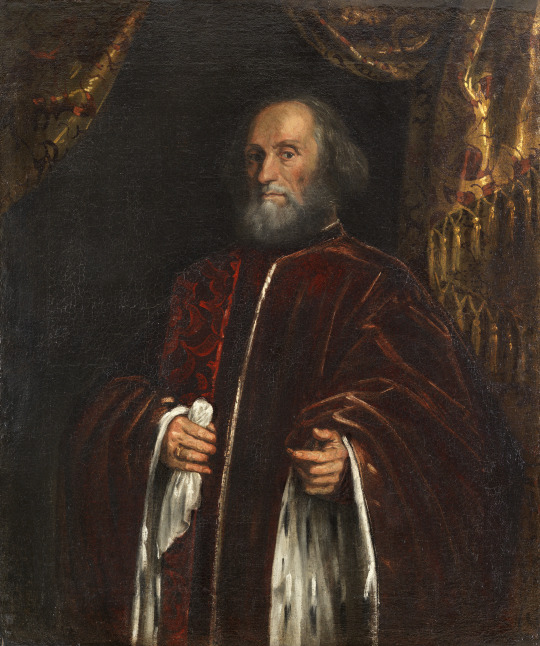
Jacopo Comin, also known as Tintoretto (b.1518 - d.1594), ‘Portrait of a Venetian Senator’ + ‘Portrait of a Senator’, oil on canvas, c.1580 & c.1570, Italian, currently in the collection of the Museo Nacional Thyssen Bornemisza, Madrid, Spain.
#jacopo comin#tintoretto#unknown sitter#known artist#oil on canvas#italian#1580s#museo nacional thyssen bornemisza#unknown sitters
1 note
·
View note
Photo

Baptism of Christ, Jacopo Tintoretto , 1580s, Cleveland Museum of Art: European Painting and Sculpture
Based on a passage from the New Testament book of Matthew, this work depicts Saint John the Baptist performing Christ's baptism in the river Jordan, during which the heavens opened and the Holy Spirit descended in the form of a dove. The powerful modeling of the bodies and luminous color characterize High Renaissance painting in Venice. Because of Tintoretto's pioneering use of rich color, his work was a crucial source for many later artists.
Size: Framed: 200 x 286.5 x 14 cm (78 3/4 x 112 13/16 x 5 1/2 in.); Unframed: 169 x 251.4 cm (66 9/16 x 99 in.)
Medium: oil on canvas
https://clevelandart.org/art/1950.400
6 notes
·
View notes
Note
yellow, fuscia, sea green, beige! <3
yellow: name of an artist you think is underappreciated
Jacopo Tintoretto my good friend. i dont know if hes 'underappreciated' really but i want to see more of his stuff places <3 <3 <3 <3
fuchsia: favorite land animal?
coyote!
sea green: can you fold a fitted sheet?
i can handle myself pretty well for the first half fold and then it all comes crumbling down around me and my kingdom falls to ruin and i leave my fugue state with a wadded-up semi passable square
beige: have any pets? what're their names?
I have a dog named arty :^)
send me color asks 🎨 !!
#my favorite animal changes so much but rn it is my friend the coyote <3 <3 <3 <3 i miss seeing them all the time#ask game#answered#divinecruelty
4 notes
·
View notes